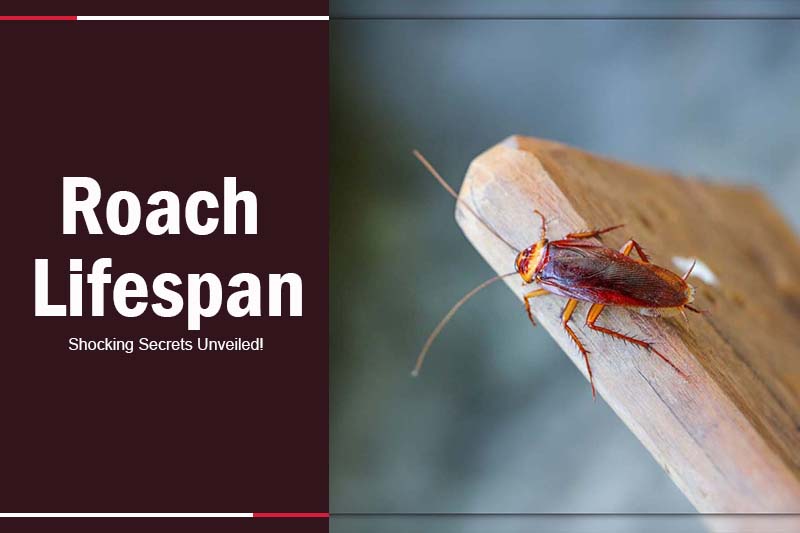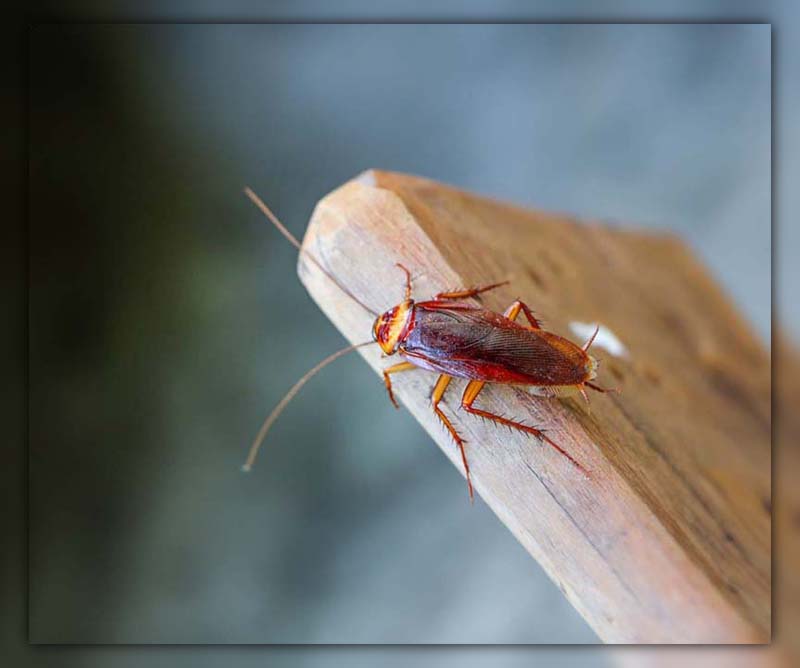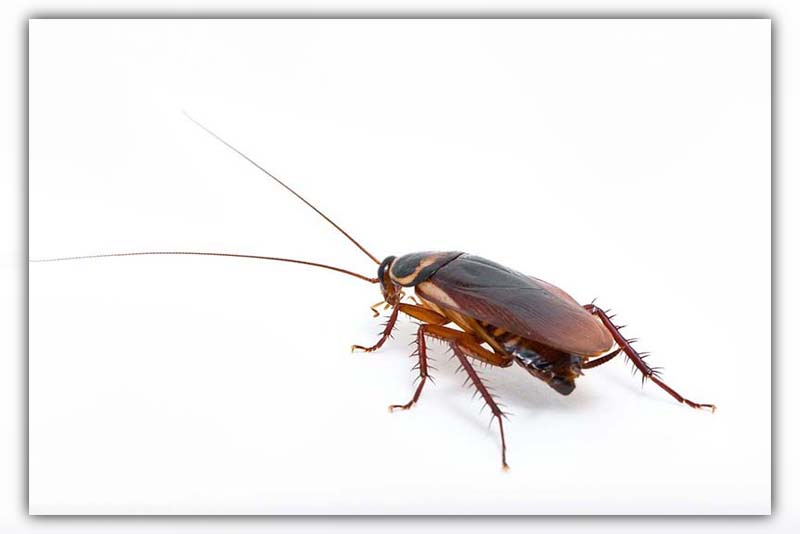Are you dealing with persistent cockroach infestations and wondering just how long does a cockroach live, and how resilient these pests can be?
Curious about the secrets behind a cockroach’s lifespan and survival tactics?
Welcome to our blog, where we unveil the mysteries of the cockroach world!

How long does a cockroach live?
The lifespan of a roach ranges from twenty to thirty weeks up to five years, varying based on species and access to food and water.
Several cockroach species exhibit distinct lifespans:
- German cockroaches live approximately 200 days.
- The Madagascar hissing cockroach can survive up to five years.
- The American cockroach lives for about a year.
- Oriental cockroaches typically live around 180 days.
Remarkably, cockroaches harbor bacteria passed down from their parents, providing essential vitamins and amino acids for their sustenance.
These microbes ensure cockroaches can thrive by consuming a wide array of food without concerns about nutritional needs.
>> Read more: German Cockroach vs American Cockroach: Traits & Control

Average Life Cycle of a cockroach
Understanding the cockroach life cycle is essential for gaining insights into their longevity.
Let’s delve into their average life cycle, which comprises three distinct stages: the egg stage, nymph stage, and adulthood stage.
Egg Stage
Cockroaches employ pheromones to attract mates, with males engaging in courting behaviors like posturing and stridulation.
After mating, the female cockroach lays eggs within three to seven days.
These eggs are enclosed within an ootheca, an egg covering produced by the female.
The female attaches this egg case to a concealed surface using her saliva, with each ootheca containing numerous cockroach larvae.
These eggs are carefully hidden to protect them from harm.
Nymph Stage
Over the course of approximately one month, the eggs hatch, and the larvae, known as nymphs, begin to develop.
These juvenile cockroaches undergo several molting stages, shedding their skin as they grow progressively larger.
Throughout this period, nymphs gradually resemble the adult cockroach, with the exception of their wings and genitalia.
It takes approximately three to four months for eggs to transform into adult cockroaches.
Cockroaches exhibit incomplete metamorphosis, meaning that nymphs bear a close resemblance to adults, differing mainly in their wing development and genitalia.
Adulthood Stage
As the cockroach matures, it acquires wings and antennae, reaching a state where it is mature enough to engage in mating and reproduction.
Adult cockroaches continue their lives, mating, and giving birth to new offspring.
>> Read more: American Roach Life Cycle: From Egg to Intruder
What factors influence the Lifespan of Cockroaches?
The lifespan of cockroaches, known for their remarkable resilience, is influenced by various factors:
- Diet and Adaptability: Cockroaches can adapt to scarce resources and diverse diets. They can survive up to a month without food, thanks to their ability to consume a wide range of items, even substances like the adhesive on postage stamps.
- Symbiotic Bacteria: Bacteria that reside in their bodies provide essential nutrients, reducing their reliance on high-quality food. This symbiotic relationship aids their survival, allowing them to thrive even with less nutritious meals.
- Headless Survival: Cockroaches can live for about a week without their heads. Their open circulatory system enables them to breathe without their heads, emphasizing that their eventual demise is primarily due to the inability to drink water.
- Predators and Natural Enemies: Natural predators play a role in shaping cockroach lifespans. Cockroaches become prey for various animals, including amphibians like toads and frogs, small mammals such as mice and shrews, and larger insects like beetles, spiders, and other arachnids. Parasitic wasps also contribute to controlling their population by depositing eggs within cockroach egg casings.
- Environmental Conditions: The environment significantly affects cockroach lifespan. Factors such as temperature, humidity, and availability of suitable hiding spots can impact their longevity and overall survival.
Cockroach lifespan without food and water
Cockroaches, known for their resilience and adaptability, can endure extended periods without sustenance. Specifically:
- Food: Cockroaches can survive for about a month without food. Being cold-blooded, they do not need to store food to generate body heat since their temperature is regulated by their surroundings.
- Water: Despite their ability to withstand food deprivation, cockroaches are dependent on water for survival. They can only live for about a week without access to water.
- Dietary Adaptability: Cockroaches exhibit remarkable dietary adaptability, consuming a wide array of materials such as paper, book bindings, fingernails, and hair when food sources are scarce.
- Headless Survival: Intriguingly, cockroaches can survive for up to a week without their head. This is possible because they breathe through their body, not their mouth, illustrating their extraordinary ability to adapt and persist even in challenging circumstances.
>> Read more: German Roach life cycle: Secrets of the Pesky Pests.
Conclusion
In the realm of resilience and tenacity, the cockroach truly stands out, and one question often arises: how long does a cockroach live?
If you’re hungry for more intriguing insights and solutions to tackle pest challenges, delve into our other blogs at Pestweek.

Calina Mabel has over 15 years of experience in the field of journalism and communications. Currently, Calina Mabel is the Content Writer for categories such as Cockroach, Ants, Bed Bugs, Mosquito, Rodent, Termite, and Flies on Pestweek.com. She aims to build content for these categories with a focus on providing valuable and accessible information to readers, in order to create the world’s largest knowledge community about Pests.
All content written by Calina Mabel has been reviewed by Emily Carter.



